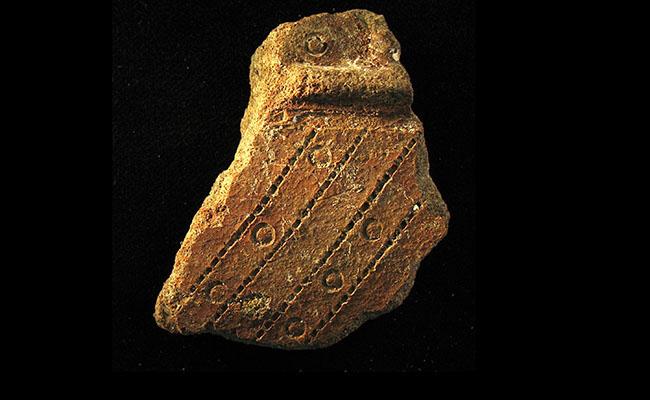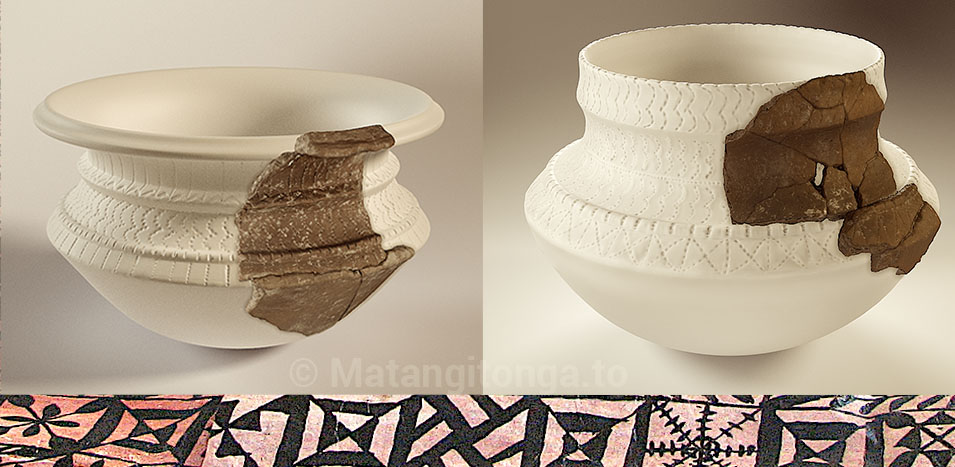
By David V. Burley.
Tonga's stunning ngatu provide testimony to the considerable antiquity of Tongan artistic designs.
Variation of the ngatu patterns, and the way these are organized, had been inscribed on the surfaces of Lapita pottery in Tonga almost 3,000 years ago.
There is an organized and bounded symmetry to Lapita design that continues today on the ngatu at ‘Alaki and elsewhere in Tonga. These barkcloth are traditionally made from hiapo (the paper mulberry plant).
Geneticists who look at the DNA of hiapo have identified Tonga as one of the hubs for dispersal of this haplotype into east Polynesia. South Taiwan is securely identified as the source origin for this variety.
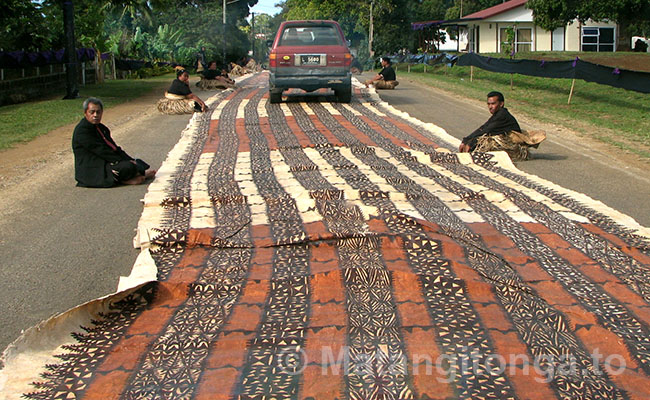
First settlements
The human settlement of Pacific Oceania is well documented in its archaeological record. By no later than 1100 BC, first exploration and colonization extended beyond the Solomon Islands, moving southward into Vanuatu and New Caledonia and southeast into Fiji. First landfall in Tonga was not long after, occurring on Tongatapu by 900 BC. This initial wave of settlement is referred to as Lapita. The villages of these people and their migration path are uniquely defined by earthenware ceramics.
Lapita ceramics are decorated in a variety of ways, the most distinctive being use of a dentate stamp. These are comb-like tools, either curved or straight, where impressions of the teeth are pushed into the surface of the pot before it is fired. The pattern has a complex imprint of dotted designs. Other enhancements included ceramic incision, applied raised ridges, lime filled impressions, and a decorative red clay slip.
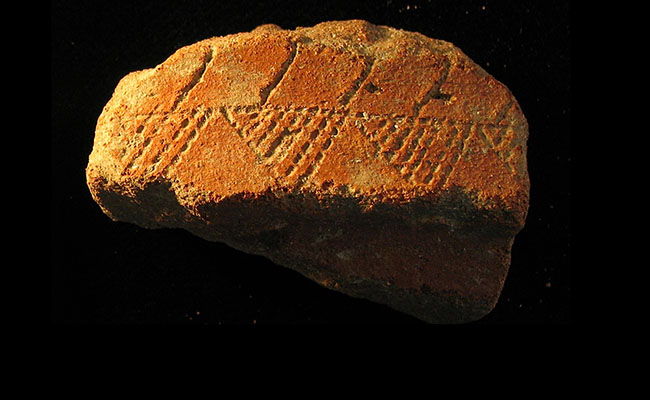
Comparative studies of Lapita pots from across the Pacific have been able to define regional styles. The earliest of these from the Bismarck archipelago off north coast New Guinea incorporates densely applied and fine-toothed dentate motifs, including some with stylized human faces. Simplification in designs occurred over time as the expansion of people moved from west to east. This is particularly notable in Tonga where motifs not only became simplified, but where decoration on pottery disappeared completely by 700 BC.
The structured layout of Lapita ceramic decoration persisted across the Pacific. It had a set of rules illustrating common ancestry for the people who made and were using the pots. The design system was built on layers, extending upward from a pot’s shoulder, across the neck and onto the rim. The layers were defined by borders and they provided segments that could be decorated or left open. They also could be sectioned by vertical borders where repeating motifs, or variations of motifs were impressed.
Artistic tradition
Yet it is more than the structure of the design that binds ngatu and Lapita decoration to a common artistic tradition. The rim of a Lapita pot from the archaeological site of Nukuleka on the Tongatapu lagoon most clearly illustrates this association.
The intricate complexities of the Tokelau Feletoa pattern, skillfully impressed with dentate stamps, and highlighted by a rusty-red paint, gives emphasis to this pattern’s antiquity. Several other patterns incorporate design elements or variations in the motifs applied to Lapita pots in Tonga. Among these are
- the infilled segments of the Manulua pattern,
- the integrated lines of Potūamanuka,
- the interlocking network of Amoamokofe,
- the herring bone ribs of Ve‘etuli and
- the occasional integration of Fo‘i Hea (dots).

Hiapo DNA
Ngatu in Tonga is manufactured from the inner bark of hiapo, the paper mulberry tree. The bark is pounded into strips using an ike (wooden beater) then bound together into sheets with mahoa’a (arrow root paste). It is often said that the rhythm of the ike as it strikes upon the anvil is the heartbeat of Tonga. That heartbeat is an ancient one.
Neither paper mulberry nor arrowroot are plants native to Polynesia. These are canoe plants, transported to and transplanted in Tonga for intentional purpose. Their arrival was undoubtedly early, quite probably brought with the founding population. Pollen analysis from archaeological deposits at the Lapita site of Nukuleka, potentially, identifies hiapo.
Geneticists recently have taken great interest in the DNA of paper mulberry for the historical insight it can provide on Oceanic migrations. Paper mulberry is a commensal, a plant carried across the Pacific with Lapita peoples and then onward with later voyages into east Polynesia. Relationships between island groups, voyaging pathways, and alternative histories for more recent introductions are recorded literally within the plant’s genetic code.
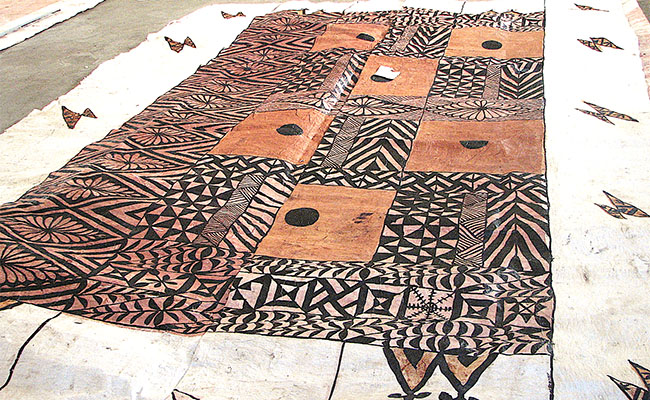
Hiapo samples from Tonga have a DNA signature that is identifiable and distinct. These samples group within a single haplotype, one blandly labelled cp-17. Cp-17 is one of 48 known haplotypes for paper mulberry. Significantly, it is the only one present in Fiji and throughout Polynesia that is not attributed to recent arrivals. Geneticists have identified Tonga as one of the hubs for dispersal of this haplotype into east Polynesia.
Origins in South Taiwan
Cp-17 has a remarkable distribution on a broader scale, giving insight into migrations and human settlement in the Pacific. Other than Fiji and throughout Polynesia, it occurs only in New Guinea, Sulawesi and south Taiwan. South Taiwan is securely identified as the source origin for this variety, with implications for the people who were to carry it beyond. That the ultimate ancestors of Lapita and Tongan peoples are tied to pre-Han Chinese indigenous groups of Taiwan is similarly supported in linguistics. Taiwan is the accepted homeland for Austronesian languages, the language family in which Tongan and all other Polynesian languages occur. And Sulawesi, not inconsequentially, has long been proposed as a jumping off point for Austronesian movement into island Melanesia.
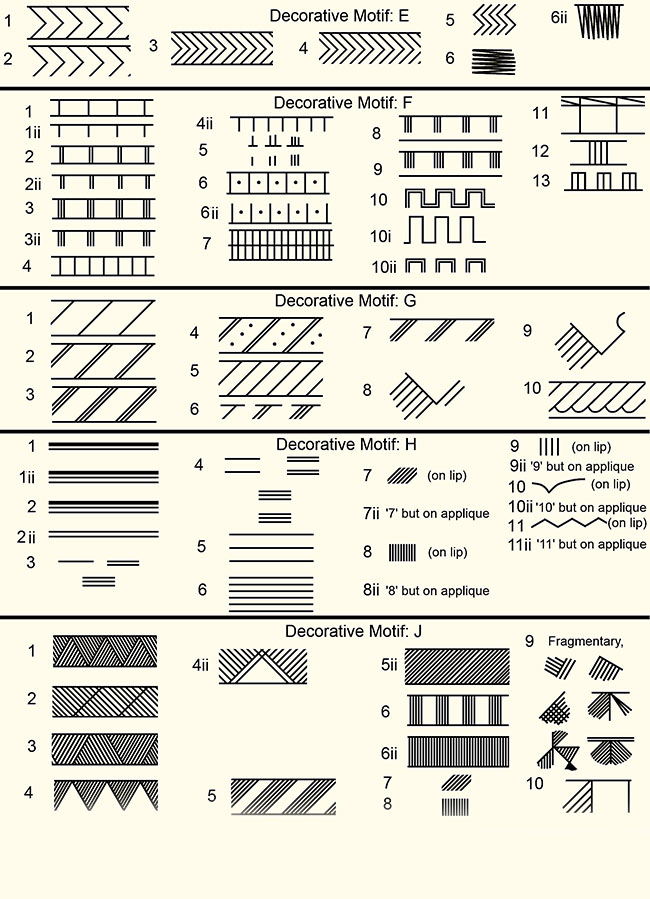

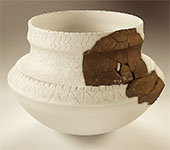
Note on pots reconstruction:
The two pots, imaged above, were reconstructed from broken bits of pottery (sherds) from Nukuleka on Tongatapu. The sherds were excavated in 2014 when Prof. Burley and his students undertook a project at the village, on a bush api called Hopoate. The sherds had been tossed into a taro planting pit and used as pottery mulch to absorb water with slow release, just as gardeners do today with broken clay flower pots in other parts of the world. The broken bits were scanned to produce a 3-D image and the reconstructed pots were built based on form.
Dr. David V. Burley is a Professor of Archaeology at Simon Fraser University in Burnaby, BC, Canada. He has carried out archaeological studies in Tonga since 1989.
More articles in this series:
- Ancient DNA provides new understanding of Oceanic settlement
- Giant Tongan fruit-gulping pigeon eaten into extinction
- The last Fale 'Otua in Ha'apai>
- ‘Ata and its archaeology
- Scarcity in Paradise
- Early settlement of Ha‘apai brilliantly laid title to islands
- Taupita –Tonga’s earliest known game
- The first Tongans


